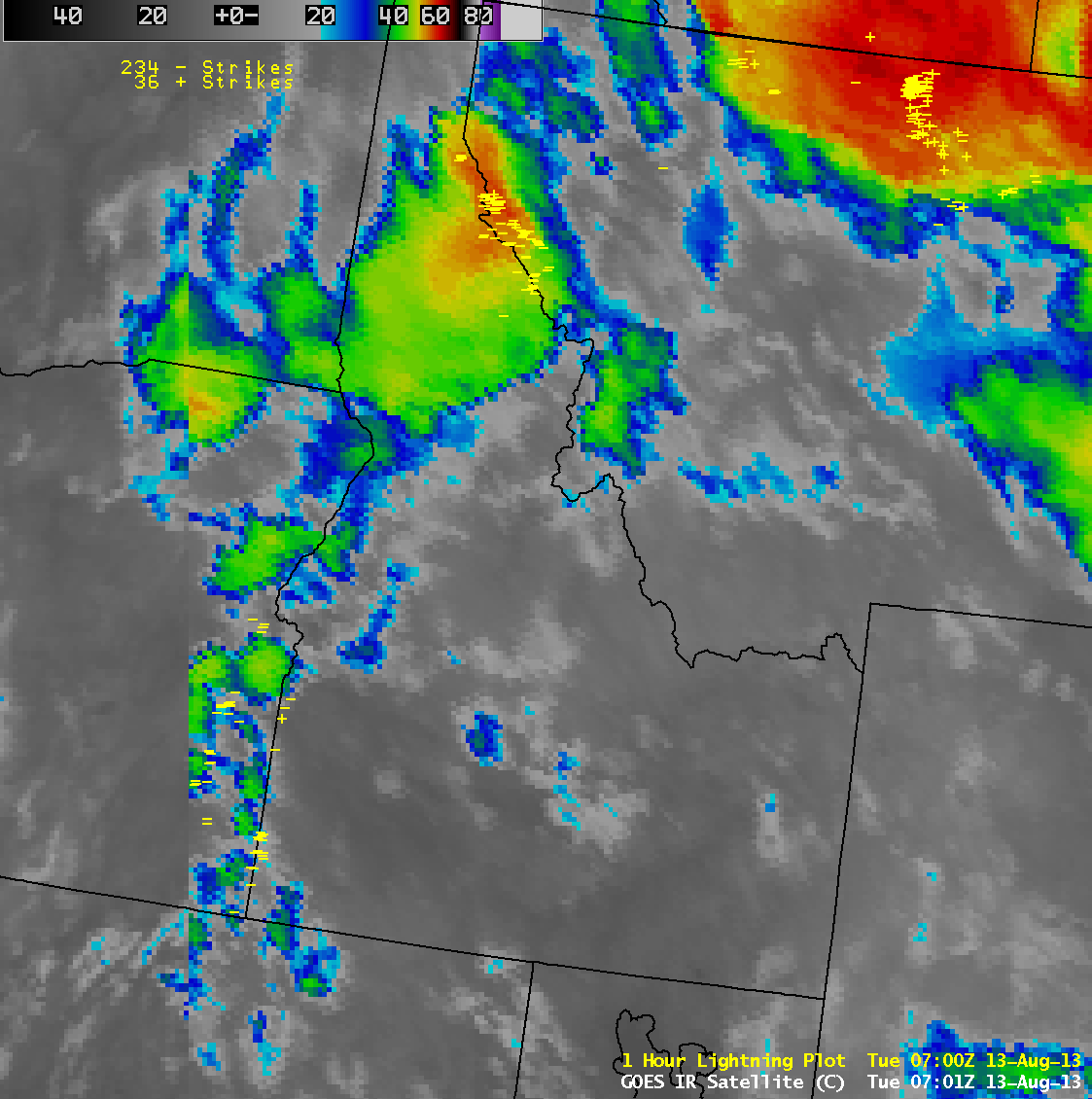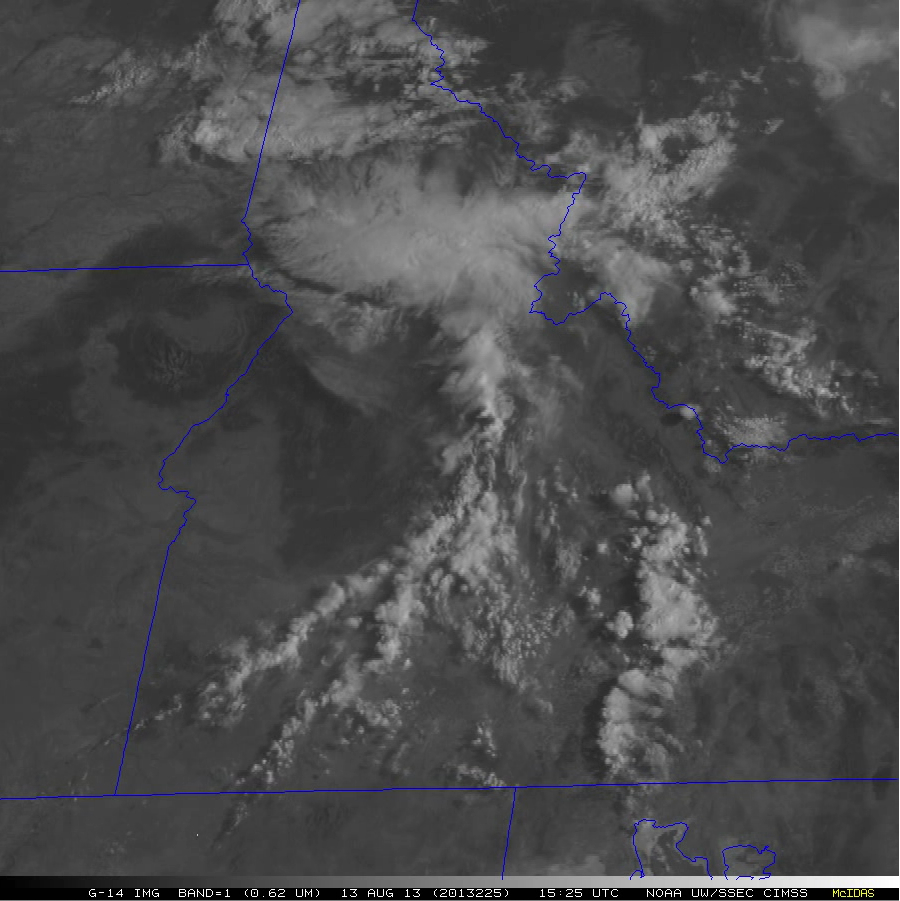The GOES-14 satellite was placed into Super Rapid Scan Operations for GOES–R (SRSO-R) mode on 13 August 2013, providing images at 1-minute intervals over the western US. The prime features of interest were wildfires burning in... Read More

GOES-14 3.9 µm shortwave IR images (click image to play animation)
The GOES-14 satellite was placed into Super Rapid Scan Operations for GOES–R (SRSO-R) mode on 13 August 2013, providing images at 1-minute intervals over the western US. The prime features of interest were wildfires burning in southern Idaho and northern California. McIDAS images of GOES-14 3.9 µm shortwave IR data (above; click image to play animation) showed that some clouds and thunderstorms (black to cyan color enhancement) were moving over Idaho during the pre-dawn hours, but a few flickers of fire “hot spots” (brighter white enhancement) could be seen through breaks in the clouds. Northern California was cloud-free, which allowed a good view of the fire hot spots over that region. Note: real-time GOES-14 SRSO-R images are available here, here, and here.
AWIPS images of GOES-15/GOES-13 10.7 µm IR channel data (below) showed that the thunderstorms moving across Idaho were producing numerous cloud-to-ground lightning strikes, which could have ignited new fire activity.

GOES-15/GOES-13 10.7 µm IR image composite (with cloud-to-ground lightning strikes)
An AWIPS comparison of Suomi NPP VIIRS 3.74 µm shortwave IR and 0.7 µm Day/Night Band images at 09:30 UTC or 3:30 AM local time (below) revealed that there were still hot spot signatures (brighter white enhancement on the shortwave IR image) evident as the fires in Idaho continued to burn through the night-time hours — and the large fire complexes also exhibited a very bright signature on the corresponding Day/Night Band image. Other bright areas on the Day/Night Band image were city lights.

Suomi NPP VIIRS 3.74 µm shortwave IR and 0.7 µm Day/Night Band images
With the arrival of daylight, GOES-14 0.63 µm visible channel images (below; click to play animation; also available as a QuickTime movie) showed the dissiparion of the thunderstorms over Idhao during the morning hours.

GOES-14 0.63 µm visible channel images (click image to play animation)
Farther to the south, GOES-14 0.63 µm visible channel images (below; click image to play animation) showed the morning erosion of areas of inland marine stratus, along with a variety of nearshore eddy circulations on different spatial scales: large eddies west of the Los Angeles area, and a series of tiny eddies moving southward from Point Sur.

GOES-14 0.63 µm visible channel images (click image to play animation)
View only this post
Read Less






